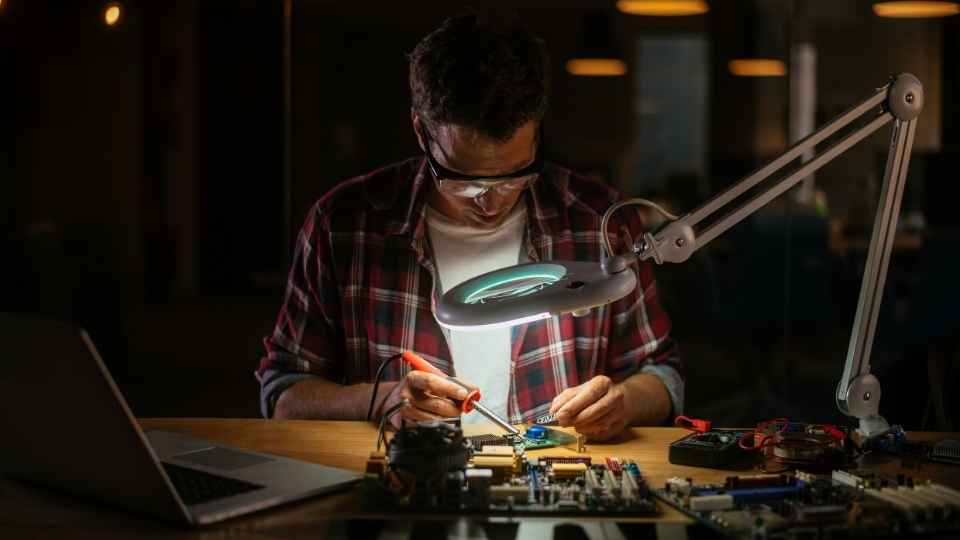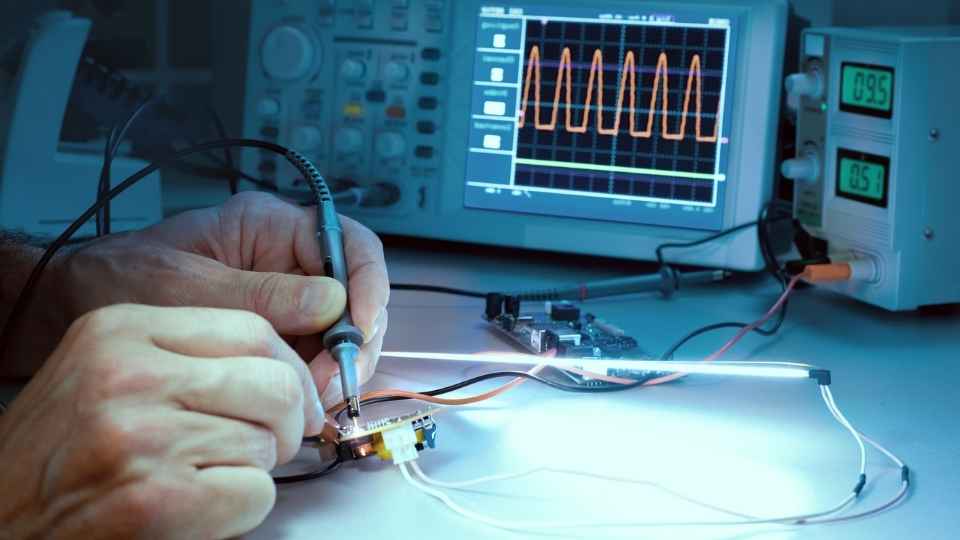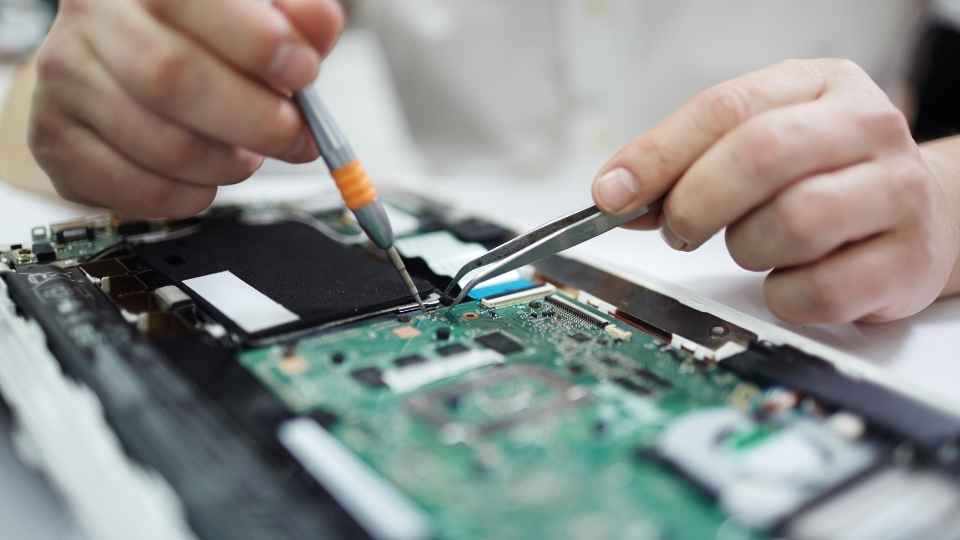
In the vast expanse of outer space, humanity's insatiable curiosity has driven us to explore beyond our earthly boundaries. Traditional methods of interstellar exploration have been limited by human capabilities and the immense distances involved.
However, with the advent of space robotics, a new era of exploration has dawned. Robotic rovers and drones, equipped with advanced technology and unparalleled precision, are poised to become the pioneers of interstellar exploration.
This article delves into the evolution, capabilities, challenges, advancements, and ethical considerations surrounding space robotics as we ponder whether these mechanical marvels will shape the future of exploring the unknown.
Key Takeaways
- Robotic rovers and drones have evolved in terms of capabilities, functionality, and materials, enabling them to withstand extreme conditions and expand their operational range.
- They are equipped with advanced navigation systems, communication protocols, and power sources, allowing for autonomous operation and the collection of valuable data about celestial bodies.
- Space drones offer advantages over traditional exploration methods, such as versatile mobility, high-resolution imaging, and real-time data transmission, which can revolutionize interstellar exploration and maximize scientific discoveries.
- However, there are challenges to overcome in interstellar exploration, including the vast distances between celestial bodies and ethical considerations surrounding responsibility, autonomy, and decision-making in robotic systems.
The Evolution of Space Robotics
The evolution of space robotics has seen significant advancements in the capabilities and functionality of robotic rovers and drones, making them valuable tools for interstellar exploration. These machines have come a long way since their inception, with early models being limited in their mobility and operational range. However, through continuous research and development, engineers have successfully overcome these limitations by incorporating advanced navigation systems, robust communication protocols, and enhanced power sources.
One key aspect that has driven the evolution of space robotics is the need for autonomous operation. Rovers and drones are now equipped with sophisticated algorithms that allow them to navigate complex terrains and make intelligent decisions on the fly. This autonomy ensures that these machines can operate effectively even when faced with unpredictable situations or communication delays.
Furthermore, advancements in material science have resulted in stronger yet lightweight structures for these robots. This allows them to withstand extreme conditions such as high temperatures or low gravitational forces while minimizing energy consumption.
Exploring the Capabilities of Robotic Rovers
Exploring the capabilities of unmanned vehicles on extraterrestrial terrains requires a comprehensive understanding of their functionalities and limitations.

Robotic rovers have proven to be invaluable tools in the exploration of celestial bodies such as Mars and the Moon. These autonomous vehicles are equipped with a range of sensors, cameras, and scientific instruments that enable them to collect valuable data about the environment they traverse.
The capabilities of robotic rovers include navigation, sample collection, imaging, and even conducting experiments. However, it is important to acknowledge their limitations as well.
Factors such as limited power supply, communication delays, and challenging terrain conditions can pose significant challenges for these vehicles. Nonetheless, continuous advancements in technology are expanding the capabilities of robotic rovers and pushing the boundaries of interstellar exploration.
With each mission's success comes an increased understanding of our universe and renewed hope for future discoveries beyond Earth's constraints.
Unleashing the Potential of Space Drones
Unleashing the potential of space drones holds immense possibilities for expanding our understanding of celestial bodies beyond what robotic rovers alone can achieve.
With advancements in technology, space drones have become more capable of navigating diverse terrains and conducting scientific experiments remotely.
These developments pave the way for enhanced exploration capabilities and data collection in outer space.

Drone Exploration Capabilities
Leveraging advanced navigation systems and cutting-edge imaging technologies, robotic drones demonstrate exceptional capabilities in exploring challenging terrains and collecting valuable data for interstellar exploration. These unmanned aerial vehicles offer numerous advantages over traditional exploration methods, making them the pioneers of interstellar missions.
Here are three key capabilities that make drone exploration a promising option for future space missions:
Versatile Mobility: Drones can navigate through rugged terrain, traverse steep slopes, and access areas inaccessible to humans or rovers. Their ability to fly allows them to quickly cover large distances and explore multiple locations efficiently.
High-resolution Imaging: Equipped with state-of-the-art cameras and sensors, drones capture detailed images and collect precise data about the surrounding environment. This information is crucial for analyzing potential landing sites, identifying resources, and assessing the feasibility of human habitation.
Real-time Data Transmission: Drones can transmit data in real-time back to mission control centers, enabling scientists to make immediate decisions based on up-to-date information. This capability significantly enhances mission efficiency by reducing response times and increasing situational awareness.
With these exceptional capabilities, robotic drones have the potential to revolutionize interstellar exploration by providing invaluable insights into distant worlds while minimizing human risk and maximizing scientific discoveries.
Advancements in Space Drones
The recent advancements in aerial vehicles equipped with advanced navigation systems and cutting-edge imaging technologies have significantly enhanced their capabilities for collecting valuable data in challenging terrains.

Space drones, specifically designed for interstellar exploration, are at the forefront of these advancements. These space drones incorporate state-of-the-art propulsion systems, robust communication protocols, and autonomous navigation algorithms to navigate through the harsh conditions of outer space.
They are equipped with high-resolution cameras and spectrometers that can capture detailed images and analyze various elements present on distant planets and moons. Moreover, these drones are capable of maneuvering in low-gravity environments and traversing rugged terrains to collect samples or perform complex scientific experiments.
With such advancements, space drones are poised to become pioneers in interstellar exploration by gathering crucial data necessary for humanity's understanding of the vast universe beyond our planet's boundaries.
Challenges and Advancements in Interstellar Exploration
One of the key obstacles in interstellar exploration is overcoming the vast distances between celestial bodies. To tackle this challenge, scientists and engineers have been working on various advancements to enable humans to explore beyond our solar system.
Here are three noteworthy developments that have the potential to revolutionize interstellar exploration:
Faster-than-light propulsion: Researchers are exploring theoretical concepts such as warp drives and wormholes that could allow spacecraft to travel faster than the speed of light, reducing travel time significantly.
Advanced life support systems: Extended space missions require sustainable life support systems capable of providing astronauts with necessities like food, water, and oxygen for extended periods. Advanced technologies like closed-loop recycling systems and regenerative habitats are being developed to address these needs.

Autonomous robotic explorers: Robotic rovers and drones can act as pioneers for interstellar exploration by gathering data, assessing planetary conditions, and mapping out potential landing sites before human missions take place.
As humanity continues its quest for freedom in exploring the cosmos, these advancements hold great promise in enabling us to overcome the challenges of interstellar distances and embark on incredible journeys into unknown realms.
The Future of Robotic Missions in Outer Space
As technology continues to advance, the future of missions in outer space is likely to see increased reliance on autonomous and intelligent systems for data collection and analysis. These advancements will enable robotic missions to explore distant celestial bodies with greater efficiency, accuracy, and independence.
Robotic rovers and drones are poised to become the pioneers of interstellar exploration due to their ability to navigate challenging terrains, collect valuable scientific data, and perform complex tasks without human intervention. These autonomous systems can be equipped with advanced sensors and artificial intelligence algorithms that allow them to adapt and respond to changing environments in real-time.
Ethical Considerations in Space Robotics
As we delve deeper into the realm of space robotics, it is crucial to address the ethical considerations that arise with their implementation. These considerations not only pertain to the robots themselves but also to their impact on the environment and potential conflicts with other space missions. Here are three key ethical considerations in space robotics:
Autonomy and decision-making: With increasing autonomy in robotic systems, questions arise regarding who holds responsibility for their actions and decisions. Should robots be programmed with a set of predefined rules or allowed to make autonomous choices?
Resource utilization: Space missions often involve extracting resources from celestial bodies, such as mining asteroids for valuable minerals. Ethical dilemmas emerge when deciding how much resource extraction is acceptable without causing irreversible damage to these extraterrestrial environments.

Space debris management: As more robotic missions are launched into space, managing the resulting debris becomes an ethical imperative. Strategies need to be developed to minimize orbital clutter and prevent collisions that could endanger future exploration endeavors.
Navigating these ethical considerations will play a vital role in ensuring responsible and sustainable advancement in space robotics while upholding human values and freedoms.
Frequently Asked Questions
How Do Robotic Rovers and Drones Communicate With Earth During Interstellar Exploration?
Robotic rovers and drones rely on advanced communication systems to establish a link with Earth during interstellar exploration. This enables them to transmit data, images, and other scientific information back to mission control for analysis and decision-making.
What Are the Main Challenges Faced by Robotic Rovers and Drones in Navigating and Exploring Different Terrains in Outer Space?
Navigating and exploring different terrains in outer space present significant challenges for robotic rovers and drones. These include adapting to harsh environments, overcoming communication limitations, ensuring autonomous decision-making, and handling the unpredictability of extraterrestrial landscapes.
Are There Any Limitations to the Capabilities of Robotic Rovers and Drones in Terms of Collecting and Analyzing Samples on Distant Planets?
While robotic rovers and drones have revolutionized interstellar exploration, their capabilities in collecting and analyzing samples on distant planets are limited by factors such as mobility constraints, power limitations, and the inability to perform real-time analysis.
Advancements in artificial intelligence and machine learning are being utilized to enhance the performance of space robotics. These technologies enable robots to learn from data, make intelligent decisions, and adapt to changing environments, thereby improving their capabilities in interstellar exploration.
What Measures Are Being Taken to Ensure the Ethical Use of Space Robotics and to Avoid Any Potential Harm to Extraterrestrial Environments?
Measures are being taken to ensure ethical use of space robotics and avoid harm to extraterrestrial environments. These include strict adherence to international treaties, implementing robust safety protocols, and conducting thorough risk assessments before deploying any robotic systems.

 Basic Electronics ConceptsEssential ToolsCircuit Design BasicsMicrocontrollersDIY Electronics ProjectsRoboticsPrivacy PolicyTerms And Conditions
Basic Electronics ConceptsEssential ToolsCircuit Design BasicsMicrocontrollersDIY Electronics ProjectsRoboticsPrivacy PolicyTerms And Conditions
